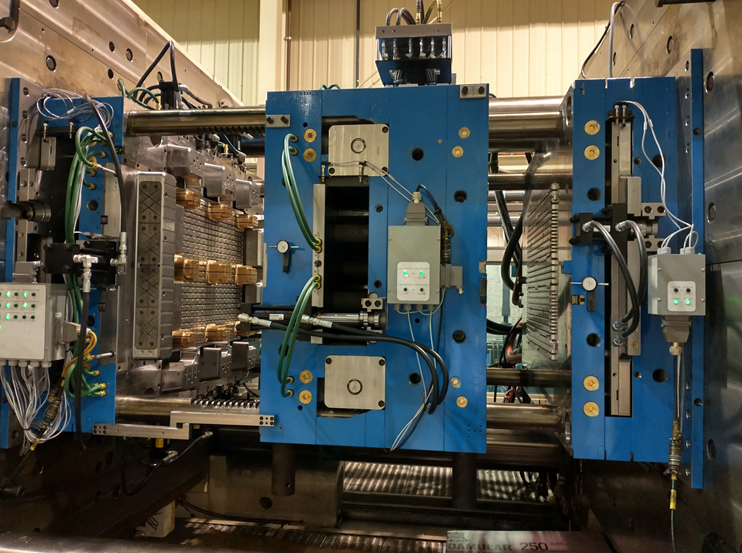Creating a Plastic Vegetable Crate Mould: A Step-by-Step Guide
Plastic vegetable crates are widely used in the agricultural industry for storing and transporting fresh produce. These crates are durable, lightweight, and easy to clean, making them an ideal choice for farmers and distributors. In this step-by-step guide, we will walk you through the process of creating a plastic vegetable crate mould.
Step 1: Designing the Mould
The first step in creating a plastic vegetable crate mould is designing the mould. This involves determining the dimensions, shape, and features of the crate. The design should take into account factors such as the weight-bearing capacity, stackability, and ventilation requirements of the crate.
Step 2: Choosing the Mould Material
The next step is choosing the material for the mould. The most commonly used material for plastic moulds is steel, specifically P20 or 718H steel, due to its high hardness and excellent wear resistance. Other materials such as aluminum or beryllium copper can also be used depending on the specific requirements of the mould.
Step 3: Preparing the Mould Base
Once the mould material is chosen, the mould base needs to be prepared. This involves cutting and shaping the steel or aluminum to create the base structure of the mould. The base should be flat and square to ensure proper alignment and stability during the moulding process.
Step 4: Machining the Mould Cavity and Core
After preparing the mould base, the next step is machining the mould cavity and core. This involves using CNC milling machines and precision tools to cut and shape the steel or aluminum into the desired shape and dimensions. The cavity and core should be carefully designed to ensure proper filling and ejection of the plastic material.
Step 5: Adding Cooling Channels
To improve the efficiency of the moulding process, cooling channels need to be added to the mould. These channels help to dissipate the heat generated during the moulding process, reducing cycle time and improving productivity. The cooling channels are typically drilled or milled into the mould cavity and core and connected to a cooling system.
Step 6: Polishing and Finishing
Once the machining and cooling channels are completed, the mould needs to be polished and finished. This involves using abrasive materials and polishing compounds to remove any roughness or imperfections on the mould surface. A smooth and polished surface is crucial for achieving a high-quality finish on the final plastic vegetable crate.
Step 7: Testing and Adjustments
Before the mould can be put into production, it needs to be thoroughly tested. This involves injecting plastic material into the mould and checking for any defects or issues. Any adjustments or modifications needed to ensure proper filling, ejection, and part quality are made at this stage.

Step 8: Production and Maintenance
Once the mould passes the testing stage, it is ready for production. The mould can be used with an injection molding machine to produce plastic vegetable crates in large quantities. Regular maintenance and cleaning of the mould are essential to ensure its longevity and consistent performance.
In conclusion, creating a plastic vegetable crate mould involves designing the mould, choosing the right material, preparing the mould base, machining the cavity and core, adding cooling channels, polishing and finishing, testing and adjustments, and finally, production and maintenance. By following these steps, manufacturers can create high-quality plastic vegetable crate moulds that meet the industry\’s requirements.
이전의:Enhancing Product Quality with Electronic Molding Parts
다음: Creating a Plastic Middle Chair Mould: A Revolutionary Innovation
-
Exploring the Advantages and Applications of Injection Molded Plastics
2023-5-31
Injection molding is a popular manufacturing process for producing a wide range of plastic products. It involves injecti...
세부 정보보기 -
Manufacturing a High-Quality Plastic Vegetable Crate Mold: Innovation in English
2023-7-8
In today's fast-paced world, the demand for efficient and reliable packaging solutions has never been higher. Plastic ve...
세부 정보보기 -
Injection Mold Manufacturing: From Design to Production
2023-5-15
Injection molding is a widely used manufacturing process for producing plastic parts in large quantities. It involves th...
세부 정보보기 -
Industrial plastic molds: the cornerstone of precision manufacturing
2024-8-19
In the modern industrial system, plastic molds, as the core tools for the production of plastic products, play an indisp...
세부 정보보기 -
Injection Moulding Machine Parts
2023-7-1
Injection moulding machines are widely used in the manufacturing industry for producing a variety of plastic products. T...
세부 정보보기 -
New Chair Mould Design: Innovation in Furniture Manufacturing
2023-6-28
With the ever-changing demands and trends in the furniture industry, manufacturers are constantly looking for ways to in...
세부 정보보기







